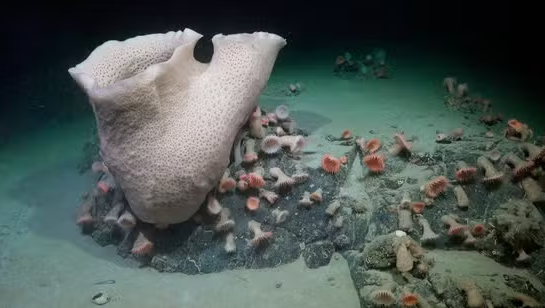An international team was on a mission in the region when a massive iceberg broke away from the ice sheet, granting access to previously unexplored seabeds.
Exploring an untouched territory and discovering unexpected life—this was the extraordinary opportunity that an international team of scientists had earlier this year during a mission in Antarctica. In early January, the research vessel Falkor (too), operated by the Schmidt Ocean Institute, was navigating the Bellingshausen Sea in the Pacific Ocean. Around the same time, a gigantic iceberg, the size of Chicago (510 square kilometers), broke away from the George VI Ice Shelf, which is attached to the Antarctic ice sheet.
When researchers realized what had happened, they did not hesitate to change their plans and head toward this newly exposed zone—an area that had not seen sunlight for decades. This was a once-in-a-lifetime opportunity, as no one had ever been able to study what lies beneath the ice under such conditions.
« Ice shelves are among the most extreme and remote environments on the planet, making it extremely difficult to access the areas beneath them, » said Aleksandr Montelli, co-leader of the expedition and researcher at University College London, in a statement released on Thursday, March 20.
Until now, studying these environments had only been possible by drilling holes in the ice and lowering cameras, providing only a limited glimpse into the hidden world beneath.
Source: Le Monde


